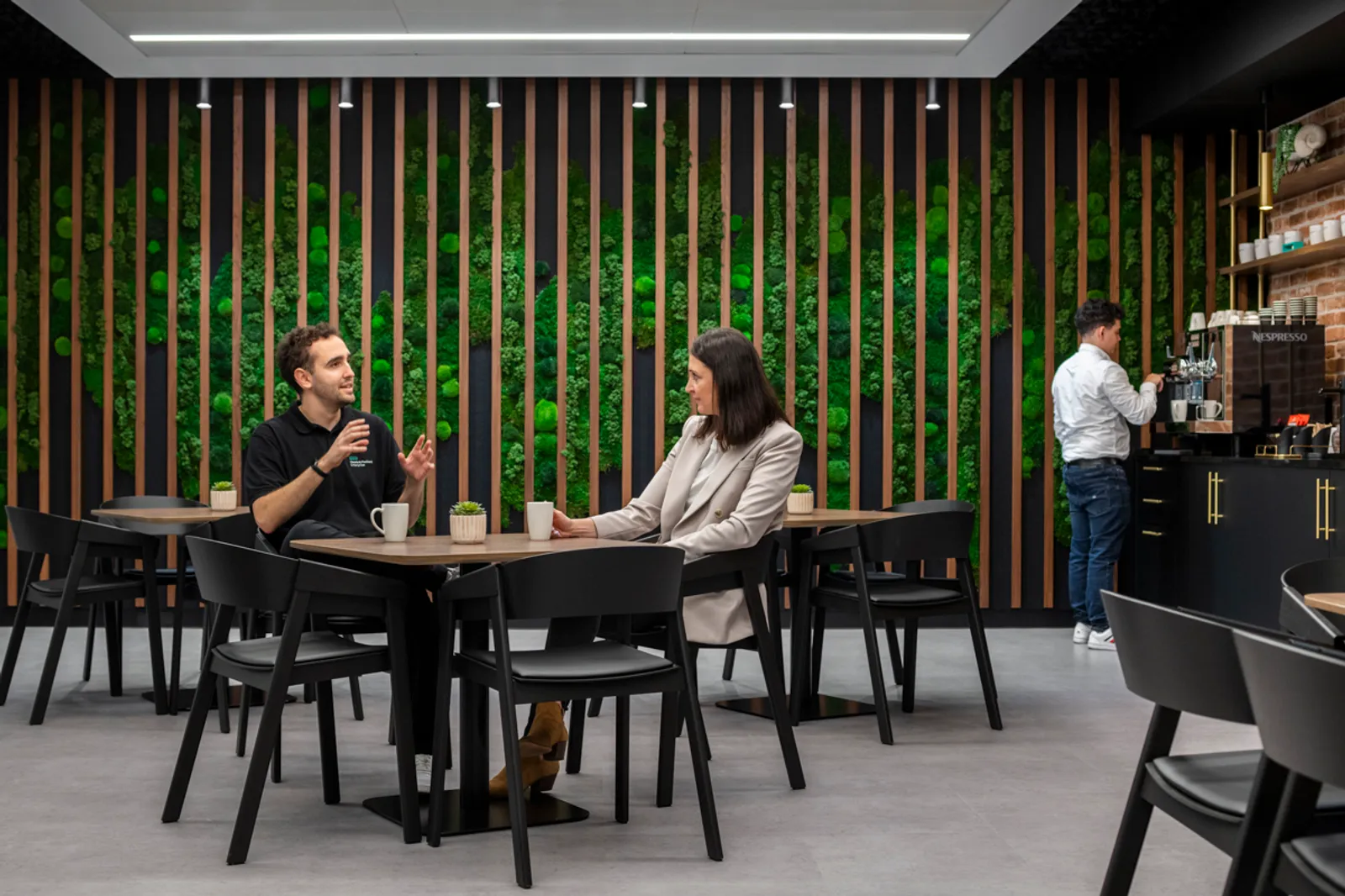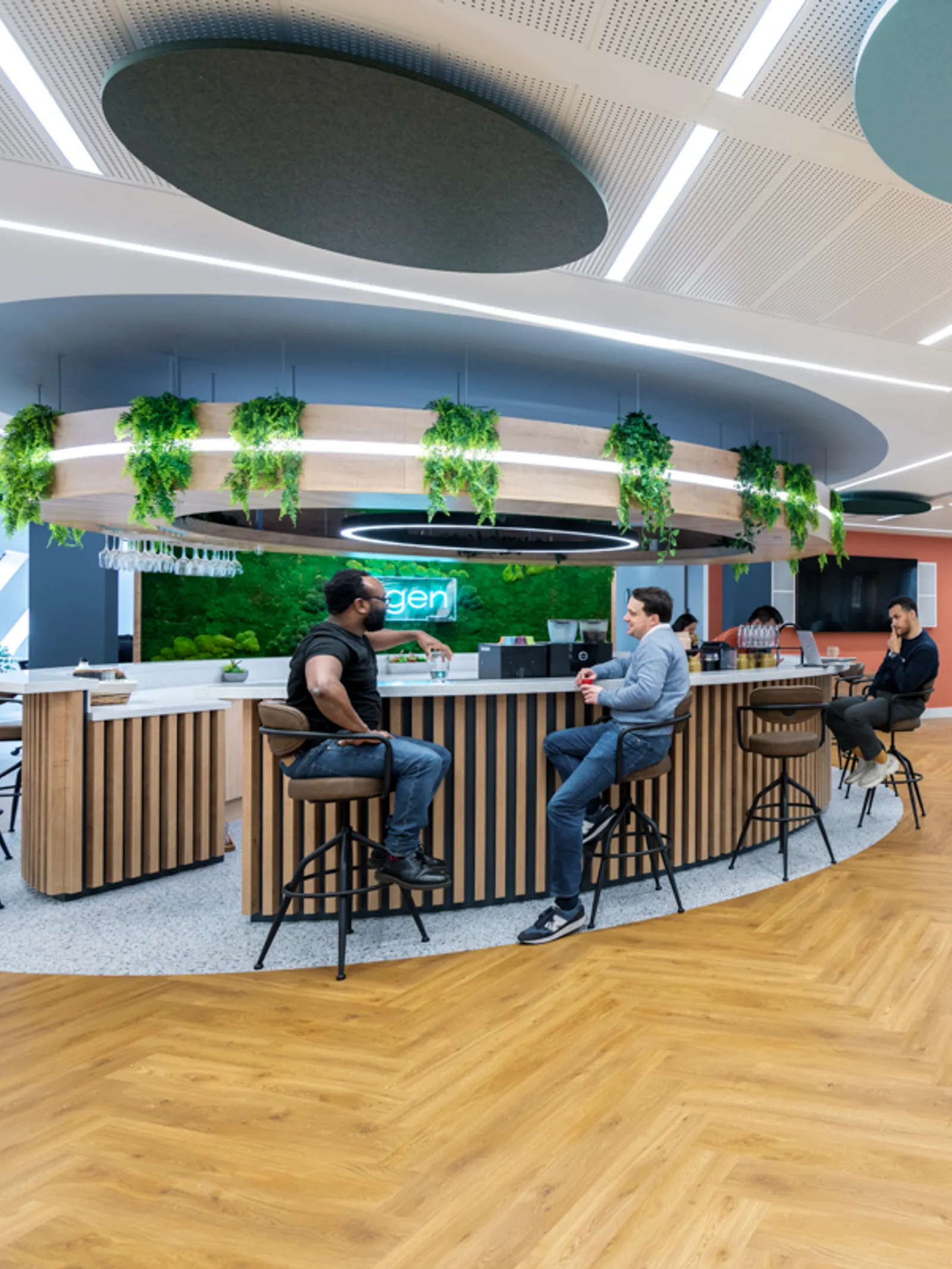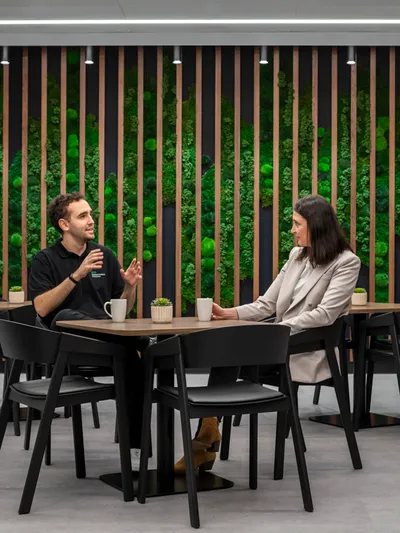Making Space for a Low-Carbon Future. Our Approach to Carbon and Community Impact.
The built environment is one of the world’s biggest levers for climate action. According to the UN Environment Programme’s Global Status Report for Buildings and Construction, buildings and construction are responsible for about 34% of global energy-related CO₂ emissions. At Area, we’re using our design and build expertise to cut this footprint, not only in our own direct operations but across every project we deliver. Through our Project Positive initiative we’re reducing embodied carbon, shrinking negative operational impacts and investing in verified climate solutions that go beyond offsetting.
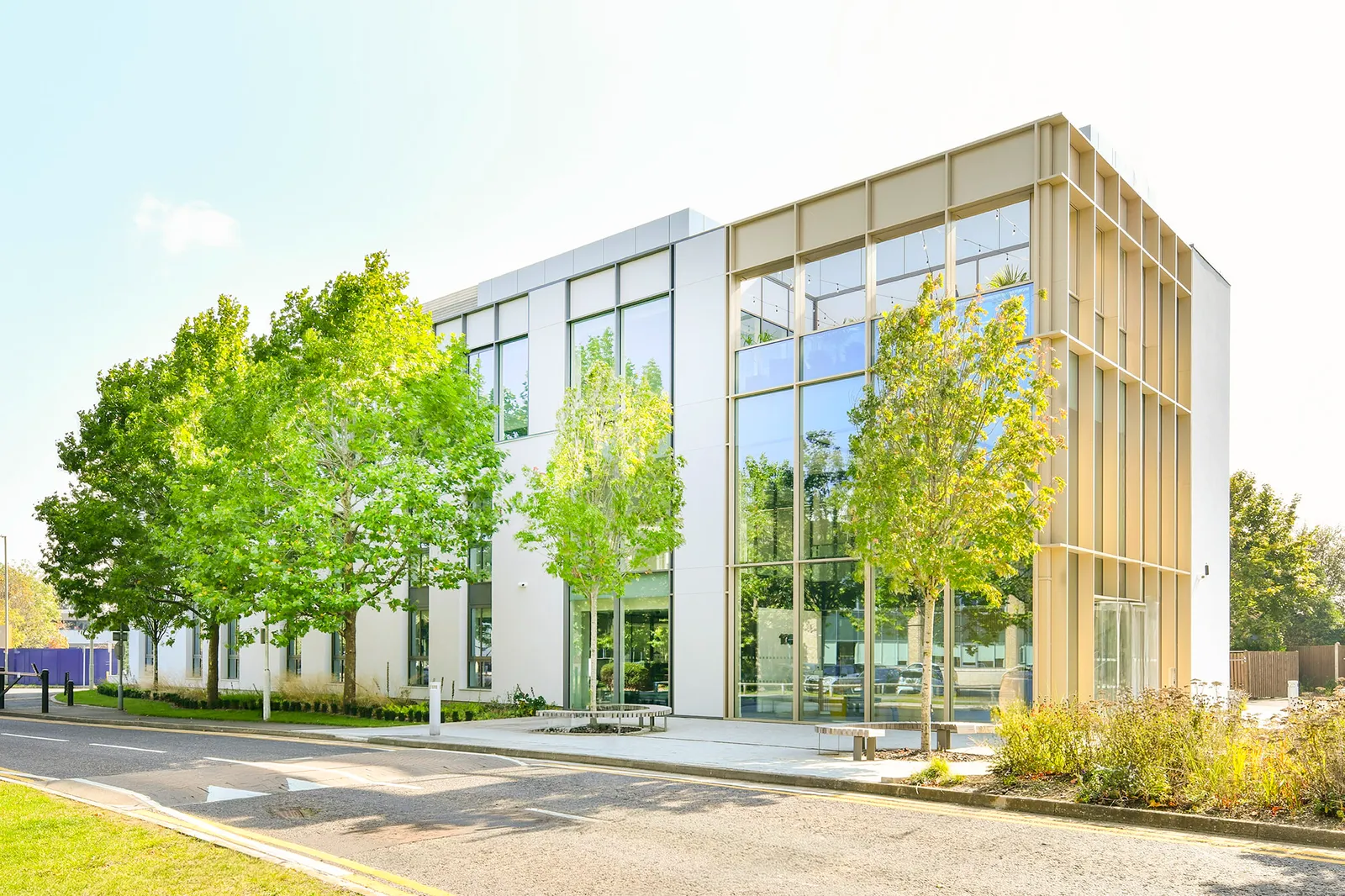
Understanding Carbon in the Built Environment
To act meaningfully, we need clear definitions:
- Embodied Carbon: All emissions associated with materials (extraction, manufacturing, transport, installation, maintenance, disposal) and the construction process. It’s especially critical in fit out, where component choices matter.
- Operational Carbon: The emissions linked to energy, heating, cooling, lighting and running the building over its life.
We classify emissions using the familiar Scope framework:
- Scope 1: Direct emissions from owned or controlled sources (fuel used on site, company vehicles).
- Scope 2: Indirect emissions from purchased electricity, heating or cooling.
- Scope 3: All other indirect emissions up and down the value chain (material production, subcontractor travel, product use, disposal etc.).
Our Strategy: Reduce Scope 1 and 2, then use mitigation (carbon removal) to neutralise what remains. For Scope 3, we partner with clients and supply chain to measure, reduce and offset in a bespoke way linked to their own sustainability policy and strategy.
Project Positive
Partnering with clients for sustainability and social impact
Launched in 2024, Project Positive is our sustainability and social impact programme. It’s not just about carbon – it’s about integrating positive environmental and community outcomes into every project.
Through Project Positive, we commit to:
- Prioritising carbon reduction and removal through smart material choice, efficient design and climate investments.
- Engaging clients in social initiatives, to amplify impact beyond environmental goals.
- Leaving a lasting positive legacy – in both nature and communities – in every project.
From Reduction to Removal: Our Carbon Mitigation Journey
We adopt a clear hierarchy of action:
- Reduce: Minimise emissions where possible through sustainable design, specification, process and technology.
- Remove: Invest in projects that actively take carbon out of the atmosphere. Projects include nature-based solutions such as blue carbon, ARR (afforestation, reforestation and revegetation), biochar, as well as technological solutions like Direct Air Carbon Capture and Storage (DACCS).
- Avoid: Support projects that prevent emissions that would otherwise have occurred. Projects include renewable energy (wind, solar, hydro), preventing deforestation of mature forests, peatland and wetland restoration, and community-based projects such as efficient cookstoves and clean water solutions.
Our bespoke Carbon Mitigation offering lets us build a tailored portfolio of avoidance and removal projects that reflects each client’s sustainability priorities. This approach covers the full spectrum of carbon mitigation techniques – from proven, nature-based solutions to cutting-edge technologies. By default, we support high-quality avoidance projects such as wetland restoration or efficient cookstoves. We then invite clients to match our investment in removal projects like blue carbon, ARR, or biochar, creating a truly bespoke climate portfolio.
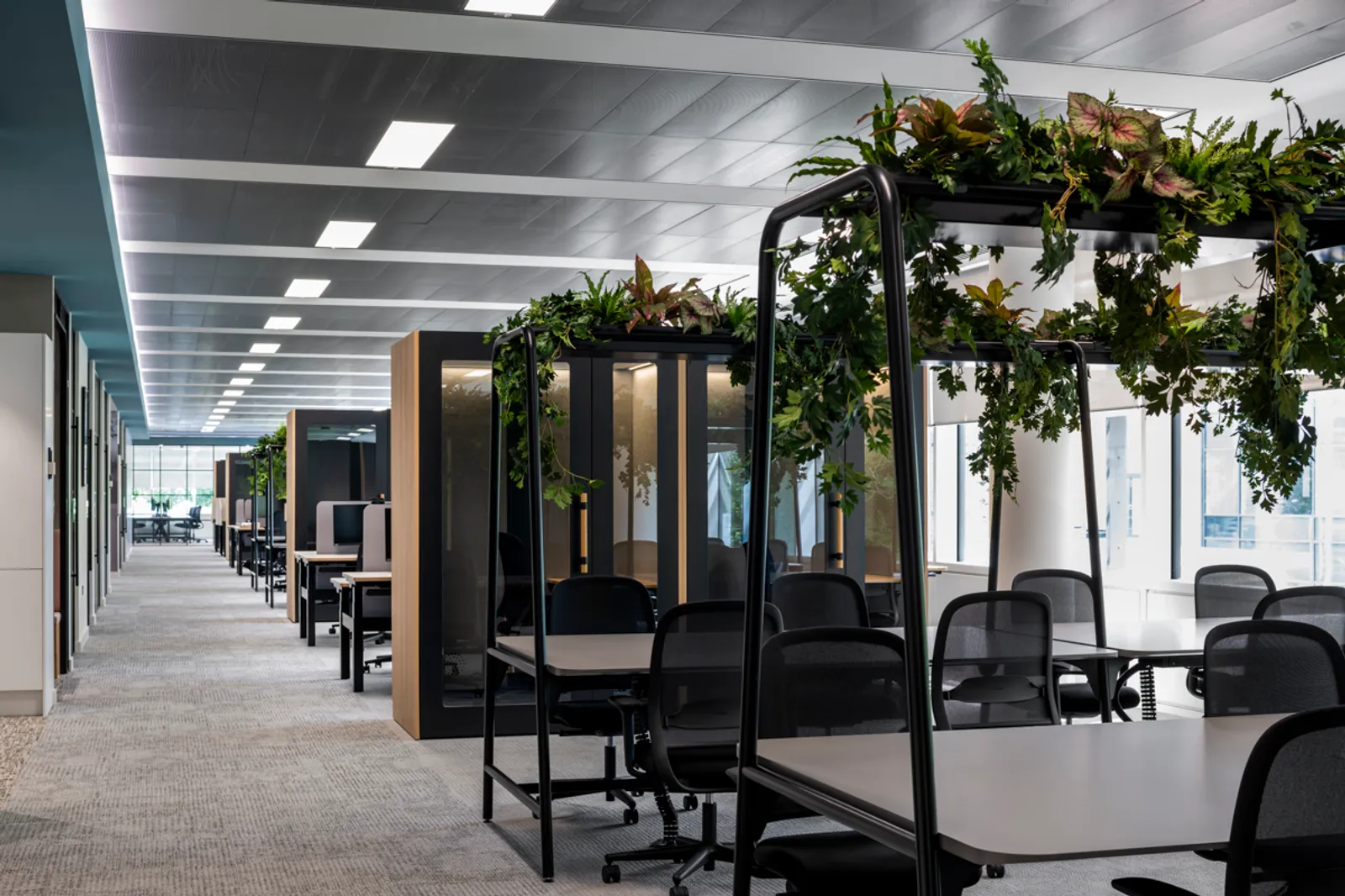
Partnership with Ecologi
To deliver this at scale we partner with Ecologi, the UK’s most trusted climate action platform. Ecologi funds high-integrity projects aligned to the Oxford Offsetting Principles and leading standards such as Gold Standard, Verified Carbon Standard (VCS) and Puro Standard. Each carbon credit represents one tonne of CO₂e reduced or removed. Once a credit is purchased it’s permanently retired, ensuring it can’t be resold – this ensures authentic impact.
Since October 2023, we have mitigated more than 10,000 tonnes of carbon via avoidance and over 100 tonnes of carbon via removal with Ecologi. The offsets for each Area project are recorded within our online Impact Forest to provide a transparent, lasting legacy.
Ecologi maintains an online Public Impact Ledger, so all mitigations and project impacts are tracked and transparent.
Because removal is harder and often costlier than avoidance, we balance both – encouraging clients to share in the investment for a robust, multi-portfolio mitigation methodology.
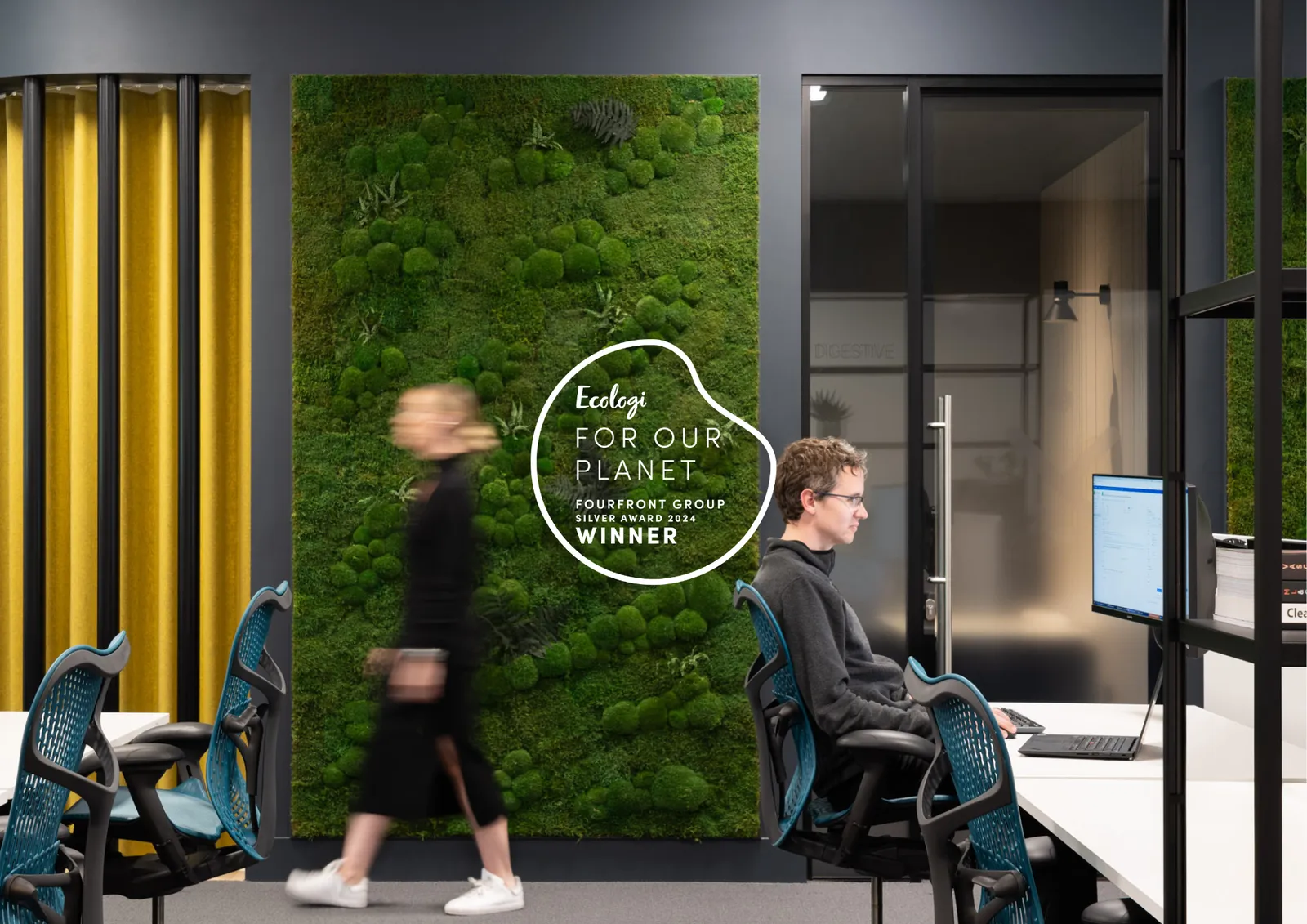
How Our Climate Projects Work – and the Difference We Make
Here’s more about the main types of projects we support and how we contribute:
Wetland / Peatland Restoration (Habitat / Avoidance)
Wetlands (freshwater marshes, peatlands, bogs) store vast amounts of carbon in saturated soils. When drained or degraded, those soils can release CO₂ and methane. Restoring wetlands or protecting existing ones halts those emissions.
In 2024–2025 we supported peatland conservation in Indonesia, helping to protect critical habitats and lock carbon in place. Our investment in this project has already resulted in 1,489 tCO₂e avoided.
ARR (Afforestation, Reforestation, Revegetation)
- Afforestation: Planting trees in areas with no recent forest cover
- Reforestation: Replanting trees in areas that were forested but lost cover
- Revegetation: Restoring vegetation cover generally (not necessarily forest) on degraded land
In 2024–2025 we supported ARR in São Paulo, Brazil, as part of our carbon removal portfolio. This project is expected to sequester 19,380 tonnes of CO₂ each year.
Biochar
Biochar is created via pyrolysis: burning biomass in low-oxygen conditions. The result is a stable, carbon-rich soil amendment. Because it's far more resistant to decomposition, carbon stays locked away for long periods.
It also has co-benefits improved soil fertility, water retention and lower emissions from biomass decay.
Our support for biochar projects in Wales helps turn waste biomass – which would otherwise decay or be burned – into a stable, long-term carbon store. In 2024–2025 this investment has already removed more than 23 tCO₂e.
Blue Carbon (Coastal / Marine Ecosystem Restoration)
Blue carbon refers to coastal ecosystems like mangroves, salt marshes and seagrasses. These ecosystems sequester carbon into soils and sediments (often more densely than terrestrial systems) and lock it in for long periods so long as the ecosystem remains intact.
By investing in projects such as Delta Blue Carbon in Pakistan, we’re helping restore vital coastal ecosystems – safeguarding biodiversity, strengthening community resilience and enhancing climate protection. In 2024–2025 this work has removed more than 23 tCO₂e.
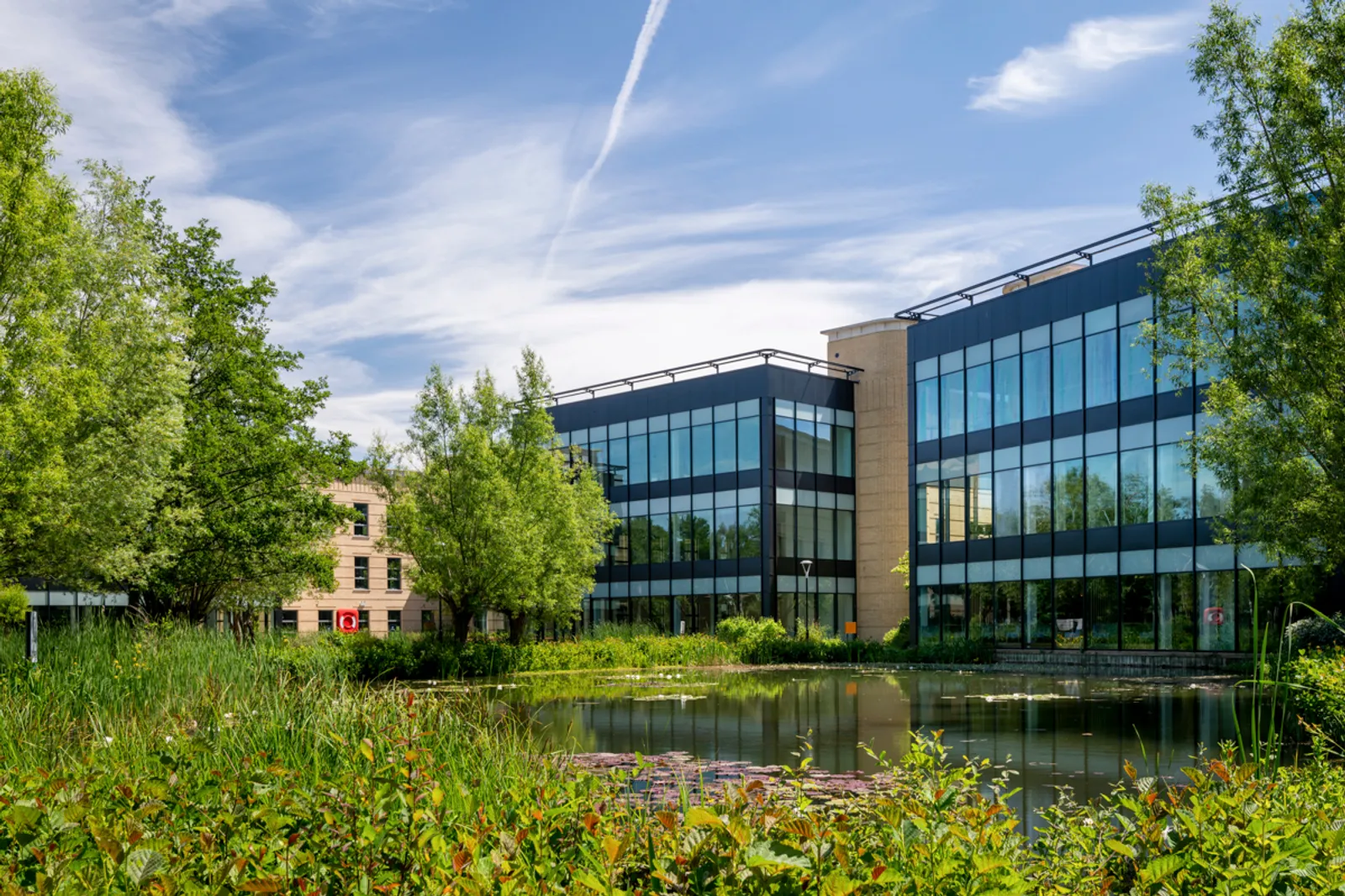
Our Impact in 2024
In 2024, we offset over 8,700 tonnes of embodied carbon linked to our projects.
To help frame the scale: Our offset is equivalent to 6,500 long-haul flights¹, 25,427 m² of sea ice saved² and 21 million car miles avoided³.
Our 2025 B Corp Impact Report dives deeper into the steps we’ve taken – and the goals we’ve set – to make Area a business that continues to lead the way in workplace design, sustainability, and social responsibility.
Continuous Improvement
B Corp Certification
We’re proud to be one of the first companies in our sector to achieve B Corp certification. The B Corp certification process involves a rigorous, independent assessment of our social and environmental performance. It provides valuable insights into our strengths and where we can improve, which in turn drive our programme of continuous progress documented each year in our Impact Report.
Alongside B Corp we’re recognised as a Business Champion for the Construction Leadership Council’s CO₂nstruct Zero Programme, our science-based targets are validated by SBTi, and in 2025 we disclosed our environmental data through CDP. We’re also supporters of the #BetterBusinessAct, which calls on every UK company to take responsibility for its social and environmental impact.
Embedding Sustainability – The Green Thread
To make sure these commitments run through everything we do, we’ve created our internal framework called The Green Thread. It’s how we embed sustainability into every aspect of our operations – from design and construction to culture and communications. It reflects our B Corp certified commitment to ethical, responsible and environmentally conscious business practices.
The Green Thread isn’t just operational, it’s cultural. It reflects our purpose to create extraordinary workplaces that prioritise sustainability, wellbeing and innovation.
Training & Tools
We back this up with dedicated training so employees can measure, assess and reduce the environmental impact of every project. This approach is now embedded in our cost-planning methodology, ensuring environmental considerations are built in from the start.
Key elements of this approach include:
- Carbon Calculator: Fully integrated into our cost-planning process, enabling real-time carbon assessments.
- Life Cycle Assessment (LCA): Every project now undergoes a detailed LCA to improve the accuracy of impact assessments and guide better material and product selection.
Make space for the future
By choosing Area, you’re partnering with a team that actively reduces carbon, invests in verified climate solutions and builds social value into every project. Through Project Positive, we give our clients a clear way to measure, cut and offset their project footprint – creating a lasting positive legacy together.
We use our carbon partner Ecologi’s Carbon Emission Factors (CEF):
- Our long haul flight of choice is London to San Francisco, a distance of 8,619.80 km (calculated using Distance To).
Using the UK government’s greenhouse gas report from 2017 This flight emits 0.15119 kg per km of CO2 per person seated in economy class.
This means the total flight emissions for one person is 1303.23 kg (1.3 tonnes). - A 2016 research paper published in Novembers issue of Science Magazine, found that the loss of Arctic sea ice had a linear relationship to CO2 emissions. This rate is 3 ± 0.3 square metres per tonne of CO2.
- The US Environmental Protection Agency’s carbon emissions calculator estimates that 2481 miles (3992.7 km) emits 1 tonne of CO2.
